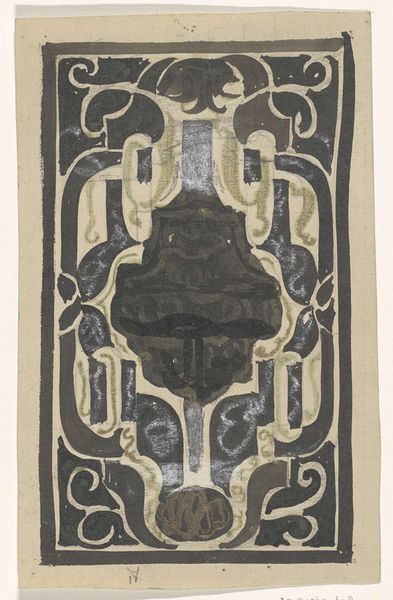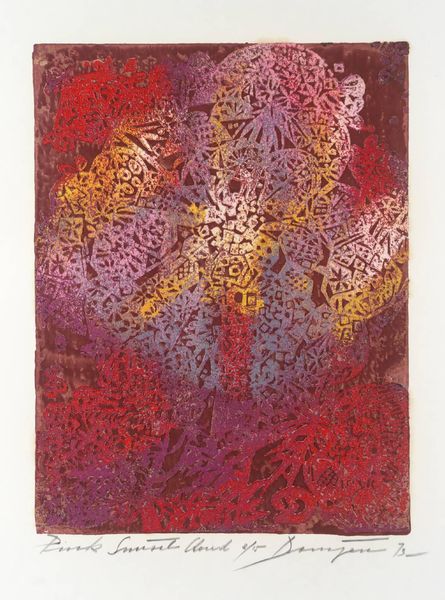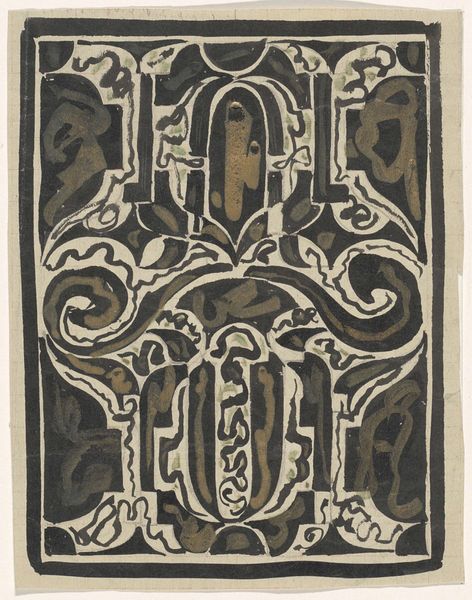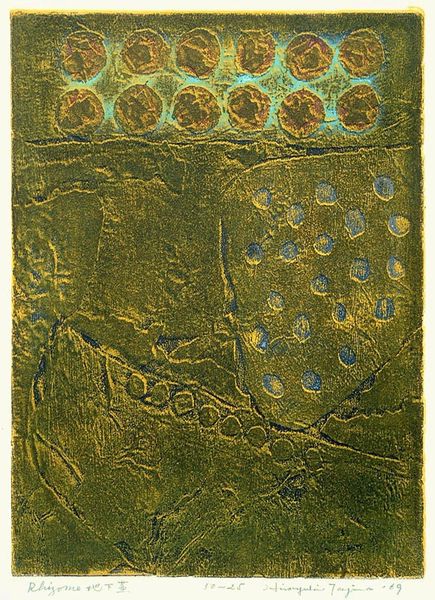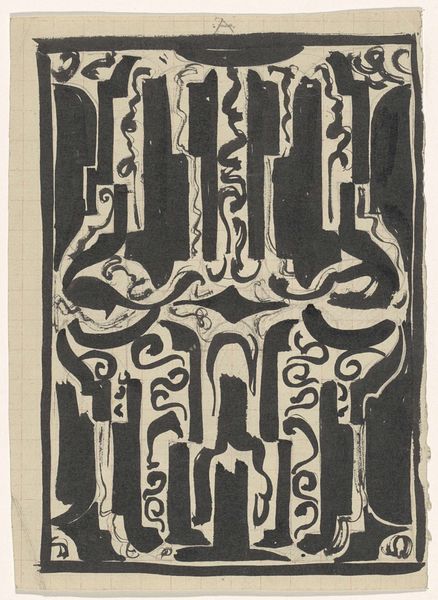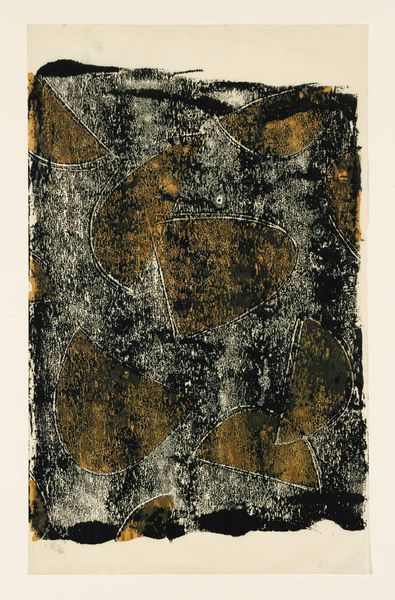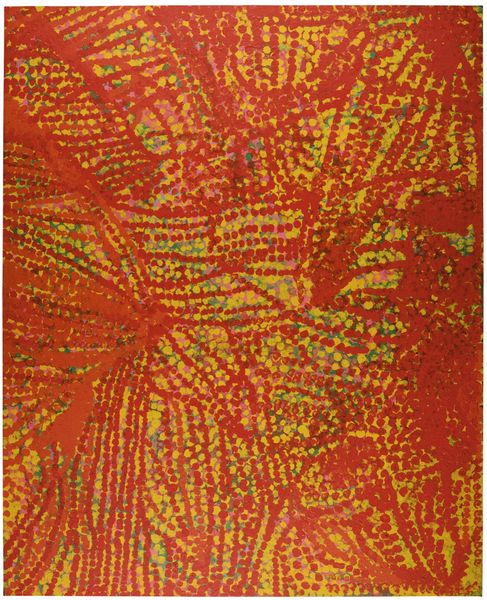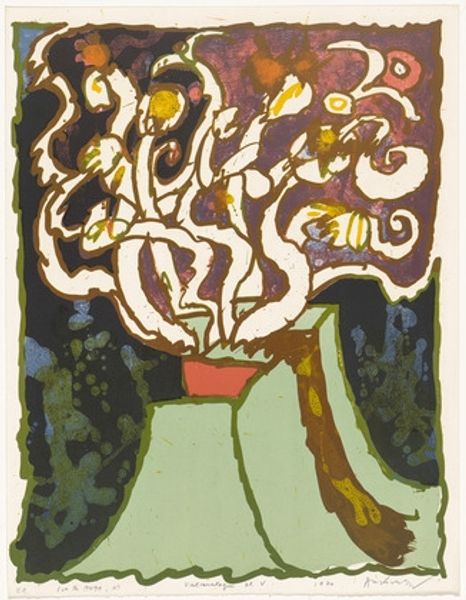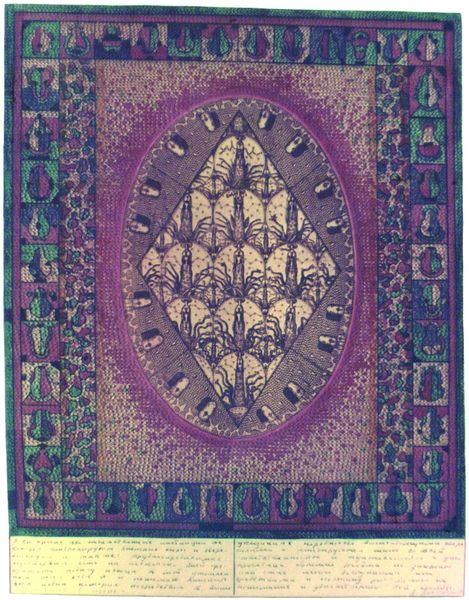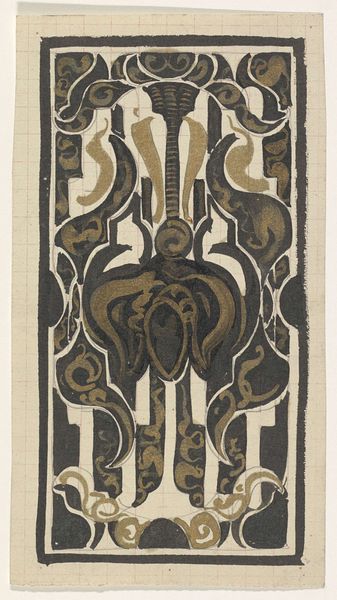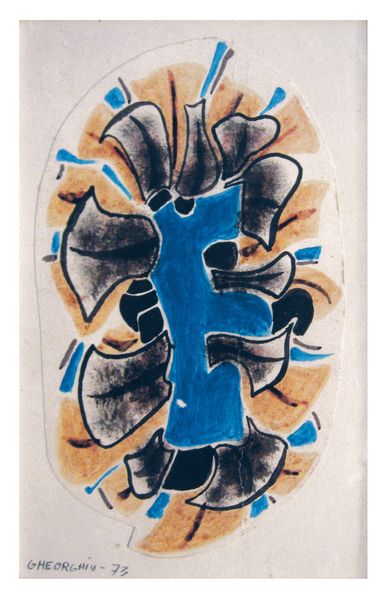
print, linocut, textile
#
organic
# print
#
linocut
#
pattern
#
textile
#
abstract pattern
#
linocut print
#
organic pattern
#
abstraction
#
surrealism
Dimensions: 43 x 33.3 cm
Copyright: Andre Masson,Fair Use
Editor: This is "Les Hain-Teny," a 1955 linocut print by André Masson. I find the biomorphic shapes quite striking. What can you tell me about the relationship between figure and ground in this print? Curator: Consider the interplay of colors, textures, and forms, quite apart from any external references. Note the vibrant juxtaposition of the dominant green, against a secondary, though ever present, field of blue. What does the pattern suggest, even without naming it? Editor: Well, the figure is an odd organic shape, seemingly contained, or defined by, a brown-orange border. The patterns make it feel like both a figure and a void at the same time. I can't decide if it is the branches or leaves of the composition? Curator: Indeed! Masson here destabilizes the conventional reading of positive and negative space through a calculated application of form and color. Observe the lines. Are they graceful, and meandering, or aggressive, angular? How do the rhythmic repetitions contribute to your understanding? Editor: The repetition definitely provides visual tension to the picture plane. Is that something Masson intended, you think, to create disharmony between what's shown versus how we react? Curator: Perhaps 'disharmony' is too strong a word. He generates a visual 'texture,' but to what expressive purpose? The all-over pattern rejects the notion of a hierarchical composition, where certain elements demand more attention than others, instead providing us a plane that promotes, overall, optical investigation. Editor: So it's the visual properties themselves, not any narrative, that give the artwork meaning? I hadn’t thought about it that way before. Curator: Precisely. Appreciate its autonomous existence!
Comments
No comments
Be the first to comment and join the conversation on the ultimate creative platform.
